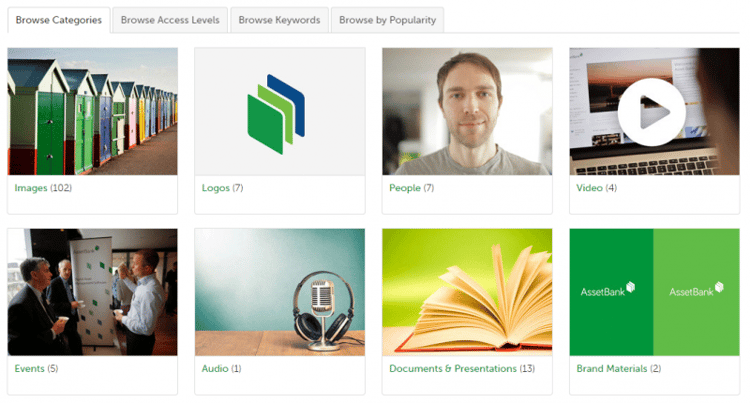
How to be a DAM good Admin – top 10 tips
There are a number of common factors often cited for ensuring a successful launch of Digital Asset Management software within your organisation, ensuring company wide buy-in, training users and buying the right system for your company in the first place. But often missed is the massively important role of the Digital Asset Management (DAM) Admin, you’re reading this blog so we’re assuming it’s you? You are the engine for making all these factors happen. Here are some tips for helping you ensure the continued success of your DAM system.
Admins are key to a successful DAM launch
1. Make time
Make sure you have enough time. As Admin you are the champion of your DAM system. In most large organisations we think the principal Admin should be a full-time job. We’re happy to explain this to your boss if that would help?
2. Talk to your users
Get to know your users - what assets will they use and what will they be doing with them? Make sure there is a desire from users to have a DAM. Once you’re ready, lobby your internal communications team to make sure you launch with a bang and everyone receives training on the system. It should be easy for all users to access your DAM and if necessary access help or support from you or your team as required.

3. Have a play first
Use free trials or demos of the DAM systems you have short-listed to find the one that fits your budget, meets your key requirements and delivers the best user experience.
4. Ensure you receive training and consultancy
Book yourself in for training with your chosen DAM vendor, they should offer sessions at both user and admin level. They may also have some training videos on key features.
When setting up your system we advise you request consultancy. With years of practise with hundreds of different clients, the team behind your Digital Asset Management system should be in a good position to advise on the features and configuration that will work for your organisation. It follows that the deeper their understanding of your business and your needs the more effective your consultancy will be. So share as much background as you can.
5. Take time setting up your folder and keyword structures
Define a folder structure to help users easily find assets, about eight to ten top level folders is ideal. Folders should be named in language and terms familiar to your users. Test the folder structure out prior to implementation, get some of your users to test it too.
Equally important is your keyword structure. Make sure assets are given strong titles and descriptions and tag them with keywords. You may consider using a controlled vocabulary which creates a standardised list of keyword for users to employ when searching for assets. The biggest gain when constructing this list of terms is to create a hierarchical structure complete with synonyms. So instead of having a tag like: man a hierarchy with synonyms will look like:
people > man [male]
So now when you add a tag of 'man', it will actually add in 'people' and 'male' as tags automatically too.
You can also use attributes to create additional fields which will helps users find assets. Advanced search functions like stemming and auto-complete will also help users find assets that match their search.

Try and categorise your assets into 8 - 10 folders
6. Make it look good
In most cases people using your assets have a major role in how your brand is communicated. Make sure you design your DAM to match your branding and promote best practise. There are a number of different features you can use to engage your users once they have logged in such as slide shows, featured assets, latest news, newly added assets and so on. To facilitate best practise you can also add brand guidelines to your main menu, which then links to a brand guidelines page and further documents as required.
7. Make it easy to use.
Add a Getting Started guide to your DAM so newbies can quickly learn how to use it without training if that is not possible. You might have a number of systems that will be used in tandem with your Digital Asset Management system such as your intranet or CMS. It might be worth exploring how you can integrate your DAM with these systems to make it easier for users. For larger organisations, Single Sign On (no need to enter a password to use the DAM) is always welcomed. The ability to share and download assets is a critical function of any DAM system so make it easy, allow users to share assets via emails and to other users not logged into your system. Create pre-sets of your assets based on sizes commonly used by your organisation. You can allow users to edit assets prior to download so they are ready to use straight away.
8. Sign up for support
Most Digital Asset Management vendors offer a support programme so it’s easy to solve any issues as they arise.
9. Keep up to date
Hopefully your chosen system will roll-out regular updates including new features. Make sure you make the most of these - especially if they are free! Sign-up for email updates from your vendor, you might also consider following them on your preferred social channels.
In addition to keeping up to date with your system, we’d recommend you get involved in the wider Digital Asset Management industry too. In this blog you'll find some tips on people to follow and books and blogs to read.
10. Maintain your Digital Asset Management system
As in life it’s advisable to keep your DAM in shape. Run regular reports to help you maintain your Asset Bank. Tasks you might carry out include; identifying and removing duplicate assets, deleting assets which aren't being used, making popular assets easier to find, addressing why some searches aren't producing results. So there you have it.
Good luck on your journey to become a Super Admin.
More reading for Admins:
7 tips for setting up your Digital Asset Management system
More tips for implementing your DAM
Responsible for your DAM? Here's what you need to know

